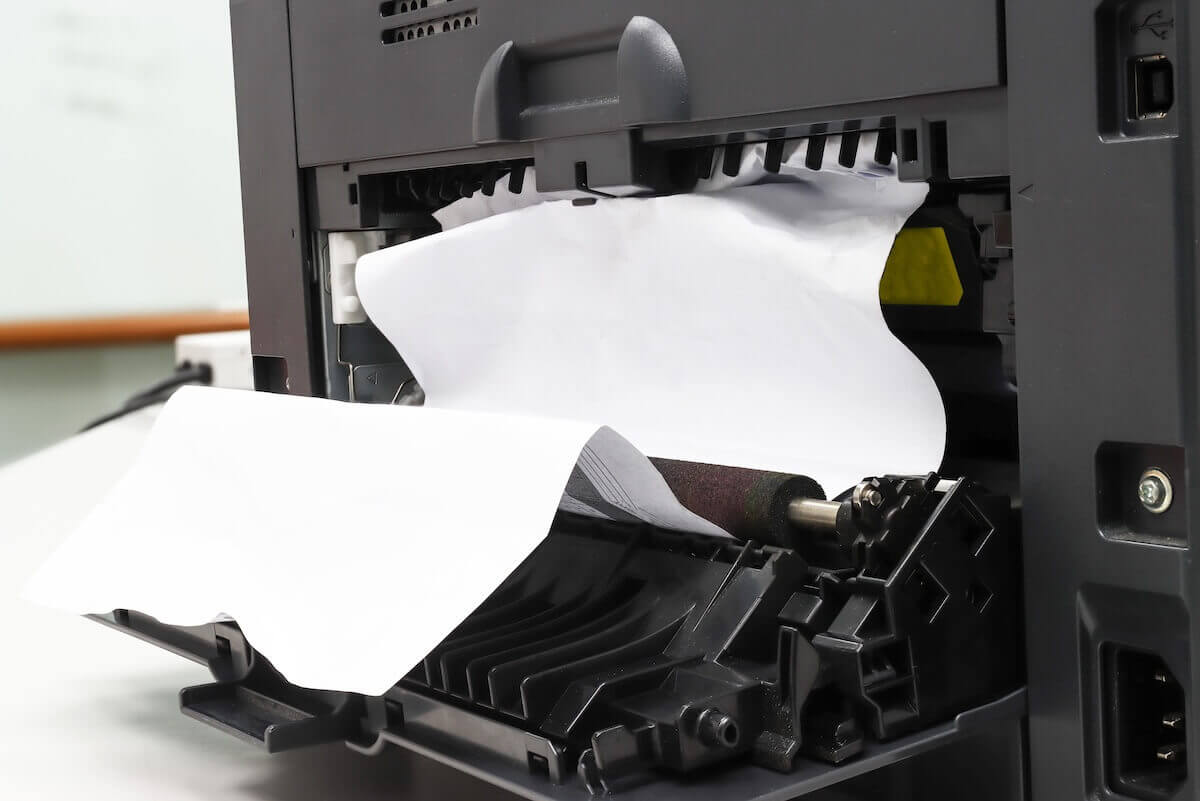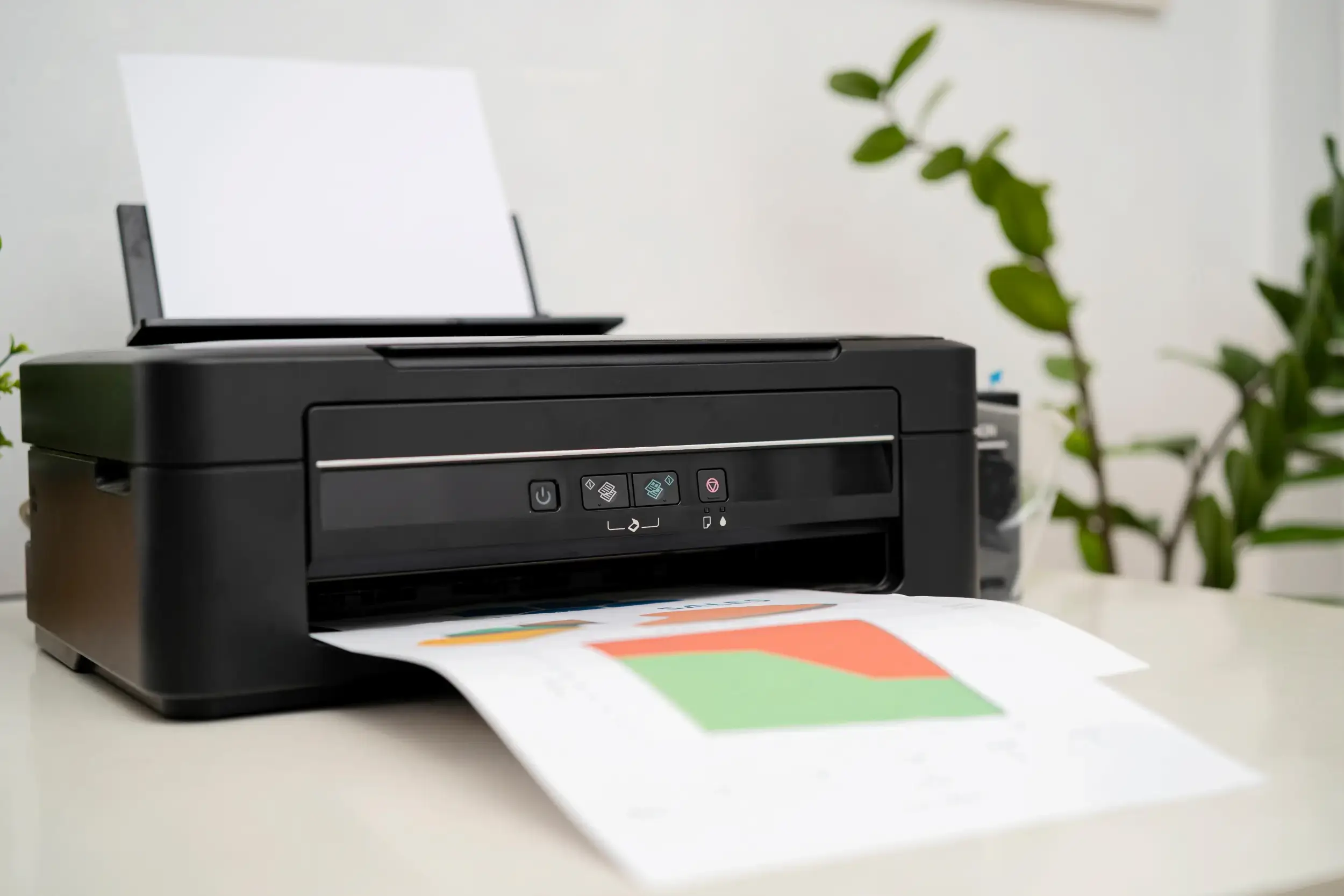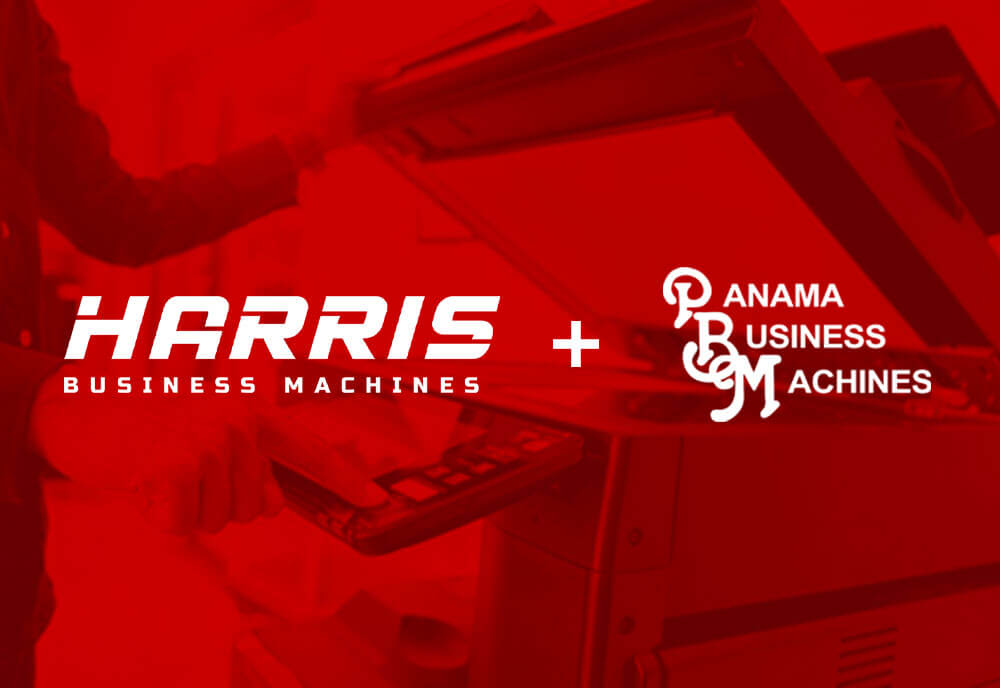HBM | June 19, 2025

It’s 2025. We have self-driving cars, AI in our pockets, and printers that can scan to the cloud in two taps—but somehow, paper jams are still a thing. If you’ve ever stood over your office printer, trying to gently tug out a crumpled sheet while muttering under your breath, you’re not alone. And yes, even the latest models from top brands still jam from time to time.
At Harris Business Machines, we hear it all the time: “Why does my printer keep jamming?” or “How do I even unjam a printer without breaking something?” The truth is, today’s machines are more advanced than ever, but jams haven’t disappeared—they’ve just evolved.
So let’s break it down: why paper jams still happen, how to fix them, and how to prevent them from disrupting your workflow.
Why Are Paper Jams Still a Thing in 2025?
Printers today are smarter, faster, and more connected. Many include jam-detection sensors, automatic maintenance features, and even predictive diagnostics that can warn you about a potential issue before it becomes a full-blown jam. Some business-class machines use laser alignment, anti-static technology, and pressure-optimized rollers to keep sheets moving smoothly through the print path.
And yet… here we are.
The reality is that no amount of automation can account for every real-world variable. Here’s why your printer keeps jamming, even in 2025:
- Human habits: Overstuffed trays, misaligned paper stacks, or forgetting to fan the paper can easily lead to jams.
- Paper problems: Using the wrong type of paper—or even storing it in a humid environment—can cause sheets to curl, stick, or slip at the wrong time.
- Worn components: Rollers and internal guides wear down over time, especially in high-volume offices.
- Environmental conditions: Humidity and dust can throw off even the most sophisticated feed mechanisms.
- Software mismatches: Sometimes, print settings don’t match the paper type or size, leading to errors mid-job.
So yes, technology has made things better, but it’s not foolproof. The good news? Most jams are preventable—and fixable—without calling for support.
What Causes Paper Jams?
Now that we’ve covered why paper jams are still a reality, let’s get specific. Here are the most common culprits—and how they create chaos inside your printer:
1. Paper Misalignment or Overloading
Even a small misalignment in the paper tray can throw everything off. If the paper stack isn’t centered or is overfilled, your printer may pull in multiple sheets at once, or none at all. Either way, a jam is almost guaranteed.
2. Wrong Paper Type or Quality
Yes, it matters. Modern printers are engineered with precision, and they expect paper that fits within specific tolerances. Using paper that’s too thick, too glossy, or slightly curled (from humidity or storage) can trigger feeding issues.
Tip: If you’re wondering why does my printer keep jamming, check your paper packaging. Look for the recommended weight (typically 20–24 lb for office use) and avoid bargain-bin paper with rough edges or inconsistent sizing.
3. Worn Rollers or Feed Mechanisms
Rollers are the rubber components that grip and guide paper through the machine. Over time, they wear down, lose grip, or accumulate dust—which can cause slippage or pulling multiple pages at once. If your printer jams frequently after years of use, it might be time to inspect or replace the rollers.
4. Improper Print Settings
Sometimes your printer tries to feed the paper a certain way based on what your settings tell it to expect. If your print job says “photo paper” but you’re using plain paper, or if you select the wrong tray, the machine may misfire mid-job and trigger a jam.
5. Foreign Objects or Debris
Yes, it happens more often than you think—especially in office environments. A torn piece of paper, a staple, or even a paperclip that made its way into the tray can block the path and cause repeat jams.
How to Fix a Paper Jam Quickly
Whether it’s your first jam or your fiftieth, the fix usually follows the same general steps. Here’s a straightforward guide to get your printer running again without damaging it—or losing your cool.
Step 1: Turn Off the Printer
Powering down helps prevent damage to internal parts, especially if you’re reaching inside.
Step 2: Open All Access Panels
Start with the front cover, then the rear tray, toner or ink compartments, and any doors near the paper path. Follow your model’s prompts or icons if you’re unsure where to check.
Step 3: Gently Remove the Jammed Paper
Pull slowly and evenly in the direction the paper was supposed to travel. Tugging too hard—or in reverse—can tear the sheet or damage internal gears.
If you do tear the paper, check for leftover scraps. Even a tiny piece can trick the printer into thinking there’s still a jam.
Step 4: Inspect for Hidden Fragments or Debris
Look around rollers, corners, and inside trays for small leftover pieces, staples, or buildup.
Step 5: Restart the Printer and Test
Close all covers, turn the machine back on, and try a simple print job. If it feeds correctly, you’re good to go.
Still getting an error message like “paper jam” even though it’s clear? We’ll cover that next.
When There’s No Jam—But the Printer Insists
One of the most frustrating errors? Your printer insists there’s a paper jam—but you’ve checked every panel, tray, and compartment, and there’s nothing there. If you’re thinking, “Why does my HP printer keep saying paper jam when there’s none?” — or wondering if your Canon, Kyocera, or Toshiba is haunted — you’re not alone.
This issue is often caused by what we call a phantom jam, and it usually comes down to sensors.
How Printers Detect Jams (And Why They Sometimes Get It Wrong)
Most printers use infrared sensors or mechanical detectors to track how long it takes a sheet of paper to pass through each section. If a signal is interrupted or delayed—even by a fraction of a second—the printer assumes something is stuck.
Here’s what might be triggering that false alarm:
- Dust or debris on the sensors
- A tiny scrap of torn paper that’s hard to spot
- Mismatched paper settings, making the printer expect a different feed speed
- Residual memory from a previous jam that wasn’t properly cleared
Quick Fixes to Try:
- Power the printer off and back on to clear the memory.
- Remove and reload the paper tray carefully.
- Use a can of compressed air to clean sensor areas (if accessible).
- Double-check your paper settings in the print dialog and on the printer’s display.
Still stuck? It might be time for a deeper cleaning or professional support, especially if the phantom jam keeps returning.
Tips to Prevent Future Jams
Most paper jams aren’t caused by broken printers—they’re caused by little things we don’t think twice about. Fortunately, a few simple habits can go a long way in keeping your machine running smoothly.
Preventative Tips from the Pros:
Use the Right Paper
- Check your printer’s specs for recommended weight and finish.
- Avoid using damp, curled, or previously jammed paper.
- Store paper in a dry place, especially in humid areas like Florida and the Gulf Coast.
Don’t Overload the Tray
- Follow the fill line inside the tray.
- Fan and align paper stacks before loading to prevent sticking.
Choose the Correct Print Settings
- Make sure your software’s paper type and size match what’s in the tray.
- If you regularly switch between paper types, double-check before you hit Print.
Keep the Printer Clean
- Dust and debris inside the paper path can cause false jams or feed problems.
- Wipe the rollers gently with a lint-free cloth if they look worn or dirty.
Schedule Routine Maintenance
If you’re dealing with constant jams across multiple devices, it might be time for Managed Print Services. At Harris Business Machines, we help local businesses keep their equipment running efficiently before problems start.Why Business-Grade Printers Jam Less Often
If you’re constantly dealing with paper jams, there’s a chance your printer just isn’t built for the workload. Consumer-grade printers are great for occasional use, but in busy offices, they can struggle to keep up.
Here’s what business-class printers do better:
- Precision paper handling: High-end models from Canon, Kyocera, and Toshiba are built with advanced feed systems to minimize jams, especially with high-volume jobs.
- Better sensors: These machines are designed to detect issues before they happen, not just after something gets stuck.
- Support for various media types: From labels to card stock, business printers are equipped to handle more materials without misfeeds.
- Smart software integration: Built-in tools help detect errors, manage workloads, and align settings properly from the start.
If your team is constantly asking how to fix a paper jam in the printer, it may be time to upgrade your tech, not just troubleshoot it.
When to Call Harris Business Machines
Sometimes, a paper jam is just the symptom of a bigger problem—worn parts, improper setup, or a printer that’s simply not designed for your daily demands.
Whether you’re tired of constant interruptions or your printer says there’s a paper jam when there is none (again), Harris Business Machines can help.
We offer:
- Expert support for Canon, Kyocera, and Toshiba printers
- Managed Print Services to reduce downtime
- On-site maintenance and repair in Panama City, Fort Walton Beach, Pensacola, and Mobile
- Guidance on upgrading to the right machine for your business needs
Final Thoughts: You’re Not Alone in This
Paper jams may still be around in 2025, but they don’t have to be your daily headache. With the right habits, the right paper, and the right printer, you can dramatically reduce how often you’re reaching into that tray.
And when problems do happen? Harris Business Machines is here to help—so you can focus on running your business, not clearing out another jam.
 in 2025: Top Picks and What
in 2025: Top Picks and What